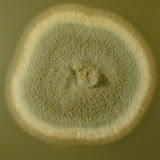 Zygomycetes are primitive, but fast growing fungi. The are widely distributed in terrestrial environments where they break down plant debris in soil. However, many species are common environmental contaminants, often causing food spoilage and a few are pathogens of plants, insects, and, humans. By definition, all pathogenic zygomycotic species will grow at 37°C, with the possible exception of the
Zygomycetes are primitive, but fast growing fungi. The are widely distributed in terrestrial environments where they break down plant debris in soil. However, many species are common environmental contaminants, often causing food spoilage and a few are pathogens of plants, insects, and, humans. By definition, all pathogenic zygomycotic species will grow at 37°C, with the possible exception of theM. circinelloides. The common genera that infect humans include Rhizopus, followed by Mucor, Rhizomucor, Absidia, Cunninghamella and Syncephalastrum. Underlying diseases in humans include cancer and leukemia, antibiotic or prednisone use, diabetes, deferoxamine and desferrioxamine therapy, transplantation, burn wounds and the associated forms of immunosuppressive therapies. The most common clinical form of zygomycosis is rhinocerebral disease followed by pulmonary, cutaneous/subcutaneous, gastrointestinal and disseminated disease

No comments:
Post a Comment